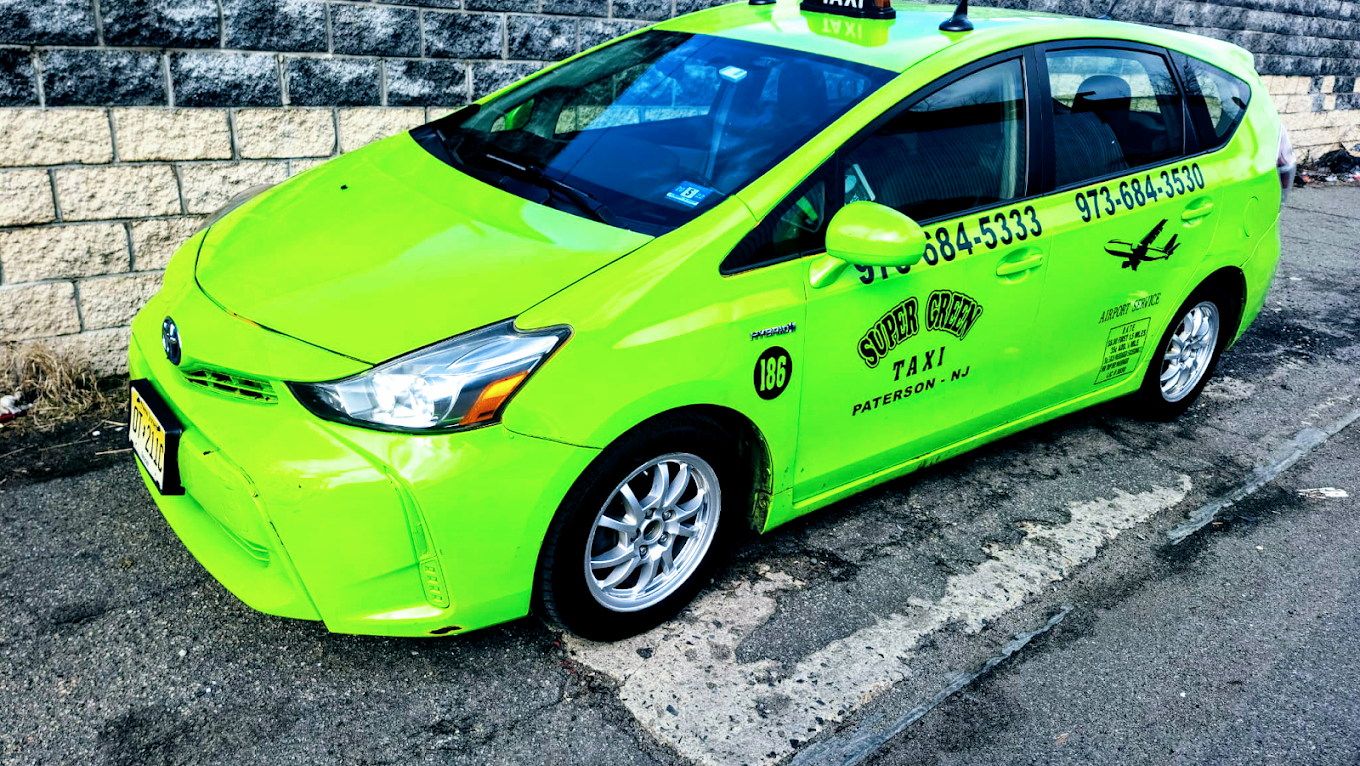Mr. Green Taxi - Premier Taxi Service in Paterson, NJ
Your Go-To Taxi Service in Paterson, NJ
Premier Taxi Services for Every Need
Welcome to Mr. Green Taxi, the leading best-rated taxi company in Paterson. Our commitment to providing safe, comfortable, and eco-friendly transportation solutions distinguishes us in the local industry.
Our Services
Paterson Airport Shuttle Service: Arrive at your destination on time with our reliable airport shuttle. Our 24-hour taxi service in Paterson ensures that you never miss a flight.
Eco-Friendly Cab Company: As a responsible eco-friendly cab company, we take pride in our environmentally conscious vehicles.
Comfortable City Cabs in Paterson: Experience the comfort of our modern fleet with our comfortable city cabs in Paterson.
Why Choose Mr. Green Taxi?
Fast Taxi Booking in Paterson: Enjoy our fast taxi booking in Paterson for a hassle-free experience.
Professional Cab Drivers: Our team of professional cab drivers is dedicated to providing safe and efficient service.
Affordable Transportation Service: We offer reliable local taxi fares that are budget-friendly.
Specialized Services
Taxi Service for Events in Paterson: Our taxis are perfect for group travel to events, ensuring safety and punctuality.
Paterson City Tour Taxis: Discover Paterson with our city tour taxis, perfect for exploring historic sites and downtown attractions.
Family-Friendly Taxi Service: Our service is designed to be family-friendly, catering to passengers of all ages.
Ready to Serve
Mr. Green Taxi is more than just a ride – it's an experience. Contact us today and ride with the best in Paterson, NJ!
Reviews:
Emily J.
Cleanest, most modern taxis which I have seen in Paterson. Pickup was on time. Driver seemed nice enough. I will be using them again.
Michael S.
Many years I've taken This cab service very nice people thank u
Isabella T.
Excellent service. Arrives quickly, respectful drivers
Joshua K.
Ecelente. Rapido y profeccional
Sophia G.
I love this taxi company. I use them every time I'm in the Paterson area.
Ethan R.
Excelente servicio muy rápido taxista muy eficiente y reoertuoso se lo recomiendo a todos.
Olivia D.
Lo que mas me gusto es el trato de los taxitas a los usuarios, son lo mejor de NJ los recomiendo al 100%
Alexander L.
Polite, cool peoples, they know where they going.
Mia W.
Excelente servicio llegan ante de los 3 minutos
William V.
Excelente Servicio, cuando necesito un taxi son los mas rápidos y mas educado de toda la zona
Ava C.
Good customer service.Highly recommend.
Matthew P.
This Taxi Service is NUMBER ONE! I'm so glad that I got to use a company like this! Definitely will be recommending this service to my friends and family



